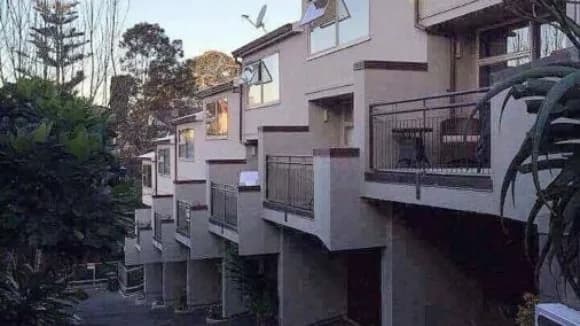
Property Management
How should I increase the rent of my investment property?
Find out how to increase the rent on your property, how to figure out what to increase the rent by, and the reasons why rent increases are normal.
Number Crunching
4 min read

Author: Laine Moger
Journalist and Property Educator, holds a Bachelor of Communication (Honours) from Massey University.
Reviewed by: Ed McKnight
Resident Economist, with a GradDipEcon and over five years at Opes Partners, is a trusted contributor to NZ Property Investor, Informed Investor, Stuff, Business Desk, and OneRoof.
Over the last 20 years the median rent in New Zealand has increased 4.82% per year.
And property investors naturally worry … “How long can rents keep going up? Won't they eventually hit 100% of income?”
This is particularly important for property investors who are forecasting over the long term how their properties will go.
So, because we love any excuse to go crunching into data, we set out to find out how quickly rents are increasing compared with incomes, and if there is a natural limit to how fast rents will rise in the future.
So, let’s get down to it – the truth is rents aren’t growing faster than incomes.
In reality, when you pop them together on a graph you can see a strong linear relationship between the rise of rents and household income.
In non-data nerd speak that means as incomes rise, rents tend to go up – as a generalisation. And while rents have nudged ahead at a marginally faster rate, they haven’t skyrocketed relative to income.
Between 1998 and 2019, median rents increased 145% and incomes increased 134%. In annual terms, rents increased by an average of 4.35% per year and median household incomes grew 4.12%.
Let’s put this into dollar amounts.
In 1998, a would-be tenant would be looking at an average weekly rent of $190. By 2019 this had risen to $465.
Now, compare that same change in a tenant’s household income. In 1998, households earned an average of $39,400. In 2019, it was sitting at $92,000 per annum.
Surprisingly, no – not really.
Despite rents and incomes rising steadily over the past 21 years (between 1998 and 2019), the share of our income going towards rent has not.
Our data tells us the proportion of income allocated to rent has ranged between 23% and 27% from 1998 to 2019.
That’s only a 3% difference between the lowest and highest proportion.
Why does this matter for property investors? This gives us confidence the rental increases that have occurred in the past are sustainable. Rents have increased because incomes have increased.
This also gives us confidence that this level of rental increase is sustainable into the future as long as incomes and the general economy continues to grow steadily over time.
So tenants aren’t getting ahead? Their incomes increase, and landlords immediately put up rents?
To get a sense of how tenants are faring over time we looked at how the cost of other outgoings (food, transport, healthcare) have changed.
This is measured by the Consumer Price Index (CPI). This metric tracks a basket of goods to see how the cost of living has changed. This includes stuff like: housing, food, clothing, healthcare, transport.
Between 1998 and 2019 there was a 57.6% increase in the CPI, which is about 2.2% per year.
What this suggests is that tenants’ financial position is getting better over time because median household incomes are increasing by 4.12% per year, and the broad cost of living is only increasing at 2.2% per year.
No, there are some limitations to the data.
Firstly, we’ve used median household incomes as the measure for what tenants are paid. But by definition 50% of Kiwis will earn less than this amount.
There could be an argument that lower paid workers in unskilled jobs (who are more likely to be tenants) will see slower increases in income, compared to people who work office jobs.
So, while the median income has increased by over 4% per year, there will be some people who have only seen incomes increase by 2% per year.
The other thing to note is that because we’ve looked at the median, we haven’t considered the full breadth of households.
For instance, while the proportion of income spent on rents looks to stay within the 23-27% band, there are genuine news reports of some paying 40% of income towards rent.
While those households are unlikely to be the norm, they do exist. So not all tenants are hunky-dory.
Finally, as we’ve seen wages and salaries tend to increase faster than inflation. Previously benefits from Work and Income only increased at the rate of inflation. Only recently has Labour changed the rules so that beneficiaries’ incomes increase at the same rate as workers’ incomes.
This means that it has progressively become harder for people on benefits to afford rents. So while workers are more likely to be able to afford rent, beneficiaries have struggled by comparison.
The bottom line is despite reports that rents are hiking through the roof, tenants’ financial health is not being eroded by ever-increasing payments.
Why? Because incomes are also climbing at a similar rate. Rents are marginally in front, but the rate is just 0.23%.
At that rate it will take until the year 2625 before rents make up 100% of household incomes. That’s 604 years in the future.
This means investors can have confidence that rental increases are likely to continue between the 4-5% range each year.
Journalist and Property Educator, holds a Bachelor of Communication (Honours) from Massey University.
Laine Moger, a seasoned Journalist and Property Educator holds a Bachelor of Communications (Honours) from Massey University and a Diploma of Journalism from the London School of Journalism. She has been an integral part of the Opes team for four years, crafting content for our website, newsletter, and external columns, as well as contributing to Informed Investor and NZ Property Investor.
This article is for your general information. It’s not financial advice. See here for details about our Financial Advice Provider Disclosure. So Opes isn’t telling you what to do with your own money.
We’ve made every effort to make sure the information is accurate. But we occasionally get the odd fact wrong. Make sure you do your own research or talk to a financial adviser before making any investment decisions.
You might like to use us or another financial adviser